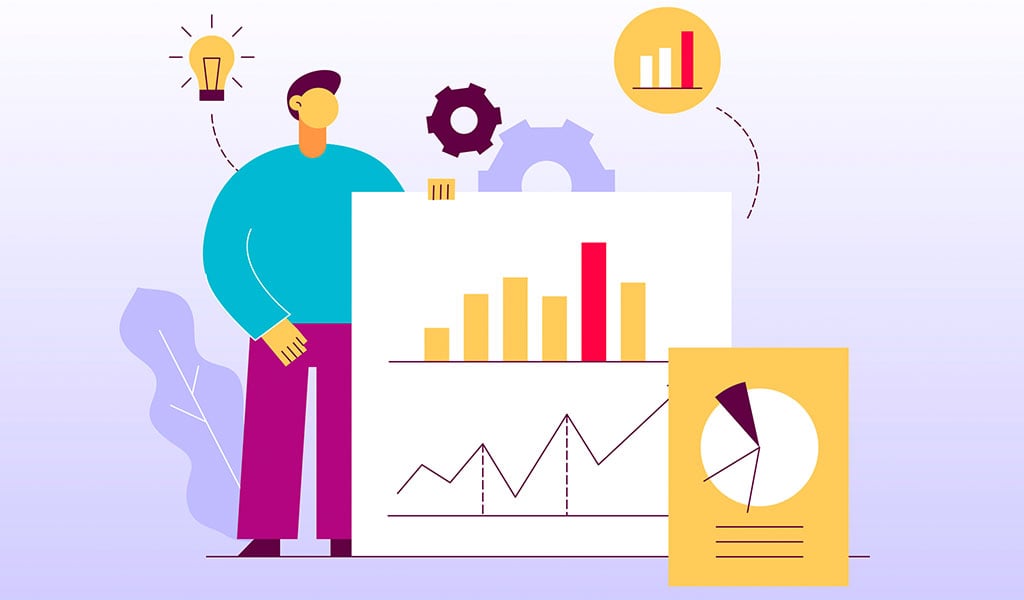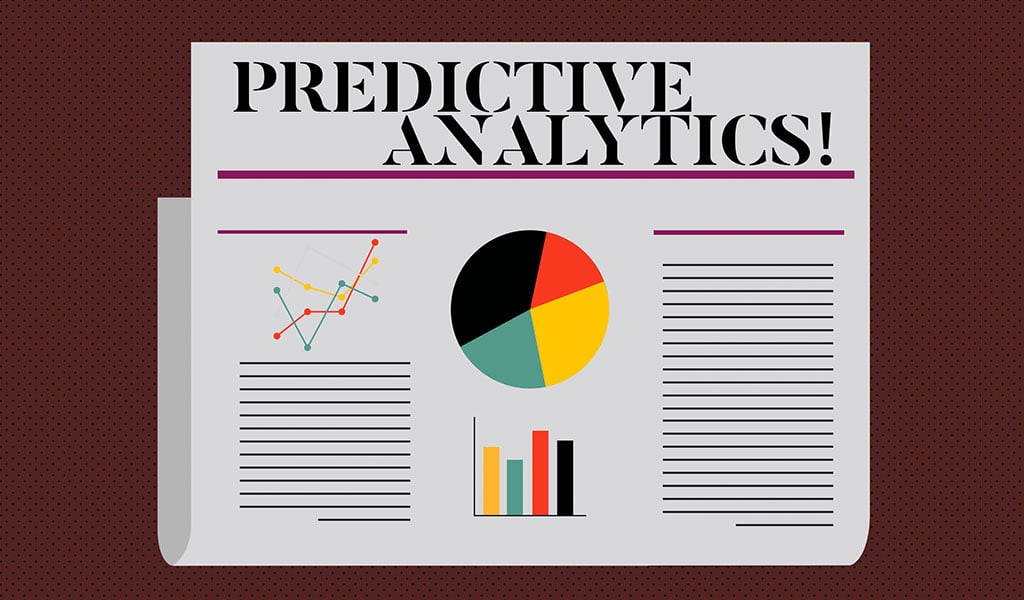
Predictive analytics brings together several disciplines to empower companies to gain insight into their data and control their future. It uses statistical techniques from data mining, predictive modeling, machine learning, artificial intelligence, and more.
When done right, predictive analytics can be extremely powerful in shaping a company’s future.
Benefits of Predictive Analytics in Business
Efficiency and Productivity
This is probably the most well-known and maybe even the most impactful example of where predictive analytics shines. When you can anticipate failures or understand why they occurred in the past, you are better equipped at dealing with them in the future. You eliminate the possibility of long and expensive downtime from something breaking down. You eliminate the labor costs associated with fixing a big problem when the problem doesn’t occur.
Competitive Advantage
Predictive analytics is like being an explorer. All the information you need is already there, it’s just hiding beneath the surface. Without this information, you are making decisions based on intuition or what you “think” is right. With predictive analytics, you can see the situation for what it really is. You have a deep understanding of your customers and your role within the market. You know what they want, you know what compels them to buy, and you know how you can deliver it. This gives you a distinct advantage over your competitors. Remember that as predictive analytics grows in popularity, more and more companies will start investing in it. If you leave it too late, then the opposite can happen. You can see yourself let left behind as other companies race ahead and sweep up your customer base.
Detecting Fraud
Fraud happens in every organization, despite our efforts to eliminate it. This could be customer fraud or even rogue employee fraud. Fraud is much easier to pull off when the company is looking the other way. When records aren’t kept meticulously and the company doesn’t have a good grip on their data, then it’s easy for fraud to slip through the net.
With predictive analytics, fraud detection is made much easier and happens without you actively looking. The predictive analytics software will continually scan for abnormalities or changes in behavior across your website or wider business. Every unusual event is caught early and can be addressed straight away.
Meeting or Exceeding Customer Expectations
Customers have higher expectations today than at any point in the past. They have a clear idea of what they want and also of your abilities to deliver it to them. The large companies have been leading the way in offering extreme levels of convenience to customers. This creates a situation where customers now know what is possible, and when they know it’s possible, they will expect it from every company. When you fail to meet these expectations, customers can perceive it as intentional.
With personalized and targeted marketing, predictive analytics also helps to connect customers with the products they will actually benefit from.

What Predictive Analytics Should You Use to Improve Customer Experience?
Lowering Churn Rate
Based on historical company data, you can find patterns when customers leave your company. This is especially effective for subscription-based services where the customer has to actively cancel their membership. This data is full of important information. With AI, you can identify customers who are at risk of canceling their subscription and try to prevent this from happening. You can also find patterns in why customers left in the past. This means you can alter your marketing or even change who you market to.
For example, if your service removed a feature that was unpopular or poorly utilized by the majority of your customers then this might have little impact on the customer base as a whole. However, you may see some customers leave if they found that feature to be essential to why they used the product. You can use the data of customers who left to see what they have in common. What type of customers are they? Do they come from the same geographic region? Do they work in the same industry? Are they in the same age range? If you do find patterns, you can then use this information to spend less time targeting these consumers since they most likely will not be satisfied with your product.
A coffee shop in New York saved 38% on marketing costs by predicting which customers were likely to churn. They sent these customers targeted discounts and offers to draw them back in and make them into loyal customers.
Predictive Maintenance and Early Warnings
This is mostly for mechanical items that experience wear and tear and failures over time. With predictive analytics, you can anticipate when parts need to be repaired, replaced, or serviced. You can then alert customers about the maintenance they need to do. This improves customer experience because it means high impact failures don’t occur.
When mechanical failures do occur, customers become angry and frustrated. They want their products to just work, and they don’t care much for how the failure occurred, they just want it fixed. Using predictive analytics in this way also helps to reduce the stress on the customer service operation. Car manufacturer Volvo uses predictive maintenance in this way with its Early Warning System that will alert customers when their car needs to be serviced.
Personalized Recommendations
This applies to personalized advertising but also personalized experiences. With advertising, you can use predictive analytics to only advertise products that you know that customers will be interested in. This could be based on their age range, previous purchasing history, or other data. Customers are more likely to ignore marketing emails every time if they think the content is irrelevant to them. You only get a few chances to put the right ads in front of the customer. After that, the customer will start to unconsciously (or maybe even consciously) ignore your emails.
Personalized experiences are also equally important. Not all advertising needs to be so obvious. When you deliver personalized experiences to your customers, you are selling your worth as a company. You are showing your customers that you are committed to making them happy and that you can meet their expectations. This is also a powerful form of marketing. When customers have great personalized experiences with companies, they are more likely to recommend the product to their friends and family. They are also less likely to try different products.
A great example of personalized experiences is Netflix’s streaming algorithm. Netflix will present the viewer with the content they think the viewer will enjoy based on what they have watched in the past. They will also have a score next to each piece of content that says how well matched they think that content is for you. For example, if you watch a true-crime documentary and then later see a crime TV show on your home screen, it might say “this show is an 80% match for you”. This can then help you decide whether you should watch the show or not.
Keeping Loyal Customers Happy
For the longest time, companies struggled to answer the question “why are my customers loyal?”. Predictive analytics gives you the answer to that question. Customers tell you what they think of your product via reviews, calls with customer service, or on social media. It’s your job to collect this data and use it to eliminate the mundane and replace it with something more exciting.
This data can inform how customer service agents interact with customers and what questions they ask. If can often take a while to strike a rapport with customers, but not when you understand how they think and feel about your brand or products.

3 Expert Tips for Implementing a Successful Predictive Analytics Strategy
Get Your Data in Order
Predictive analytics relies on data. Without clean and reliable data, there’s nothing to predict, or your predictions won’t be reliable. The more data you have, the better. You need to make sure your data management system and policies are in order before you start on your predictive analytics journey.
This can be particularly challenging for small businesses, but it’s all about being proactive. First, find where your data is and how it is stored. Then figure out how to bring this data together into one place. Then you need to work on organizing and labeling this data. Then you need to implement a robust way of collecting and storing this data in the future, so you don’t have to repeat your efforts at cleaning your data at regular intervals. There are high upfront costs and labor efforts associated with this endeavor, but you only need to do it once.
Making Goals, Making Your Model, and Validating Your Model
Set goals and objectives for what you want to achieve from predictive analytics. Sometimes we tend to want too much too soon. Try to establish what elements of predictive analytics make the most sense for your business. Where will you get the highest ROI? For many companies, the answer to this question will be lowering churn. However, if you sell expensive products that are bought infrequently, then churn is less impactful to your month to month revenue. Instead, you might focus on predictive maintenance, improving personalized experiences, or better-targeted marketing.
Then you need to make your predictive analytics model. You already have the fuel for your model (the data), now it’s time to shop around and decide what’s the best model for your company based on your goals. Do you want to buy an out of the box solution that is highly flexible and scalable? This will be the best option for most companies. Other companies might decide that they are unlikely to expand what they need from the model in the future and might opt for a bespoke solution.
Validating your model is all about finding the confidence level. You can use pre-prepared data with known outcomes to test how good your model is at arriving at the right conclusions.
Implementing Your Model
When it comes to implementing your model, it’s crucial to have all employees on board. Several teams will need to be involved in the implementation of the model, so engagement with these teams needs to start early, preferably from the data stage. They might not be highly engaged at this point, but it’s important at all teams to know that this project is ongoing. Business Intelligence teams need to be heavily engaged, as well as data governance teams.
New policies and practices need to be written so that employees have documentation to refer to when working with your model in the future. The technical teams need to be clear on their roles and responsibilities when it comes to maintaining the model. Even if they are not the team who will be fixing issues, like in the case of an out of the box model that is managed by a third party, they need to know the escalation process.